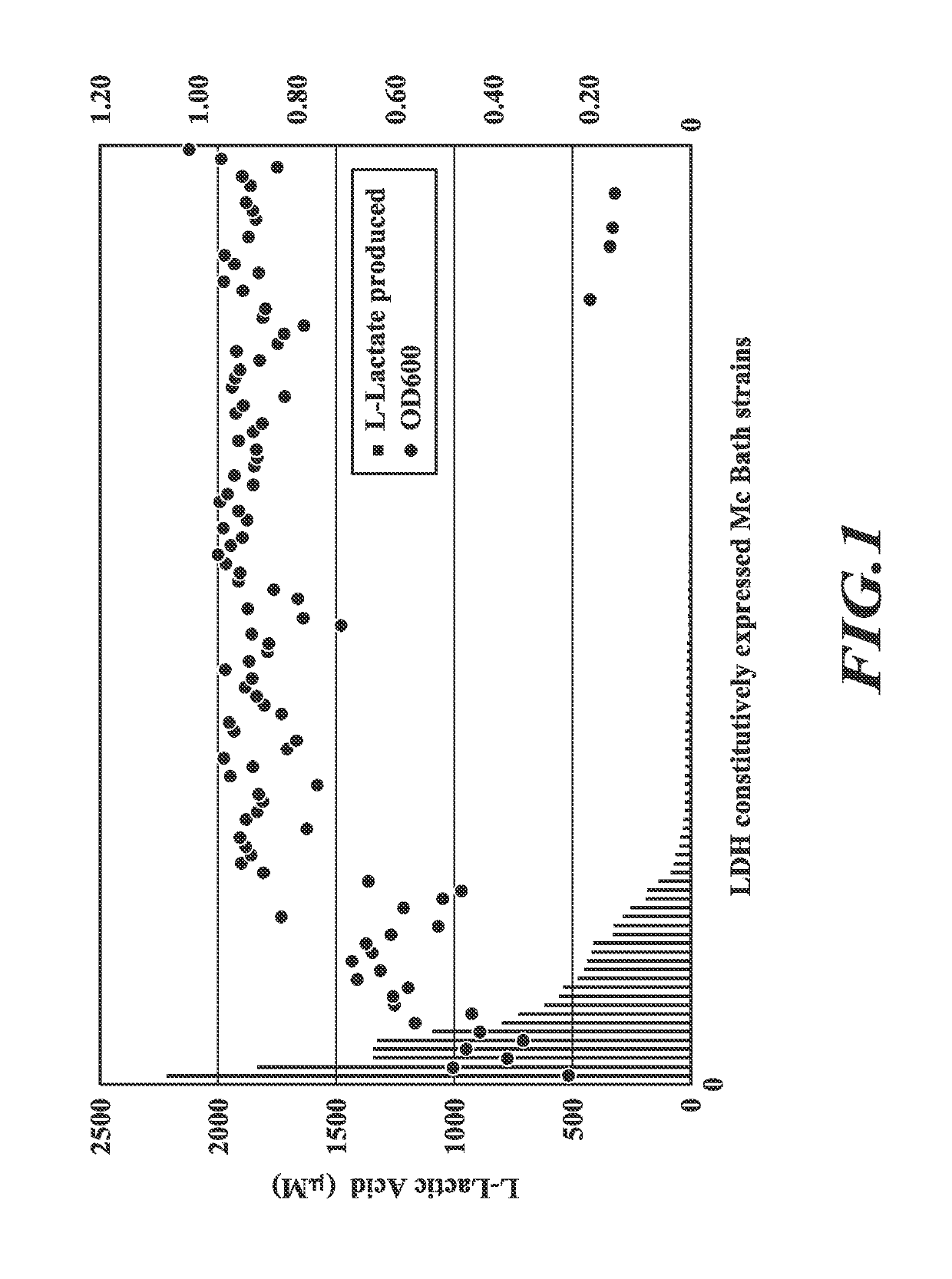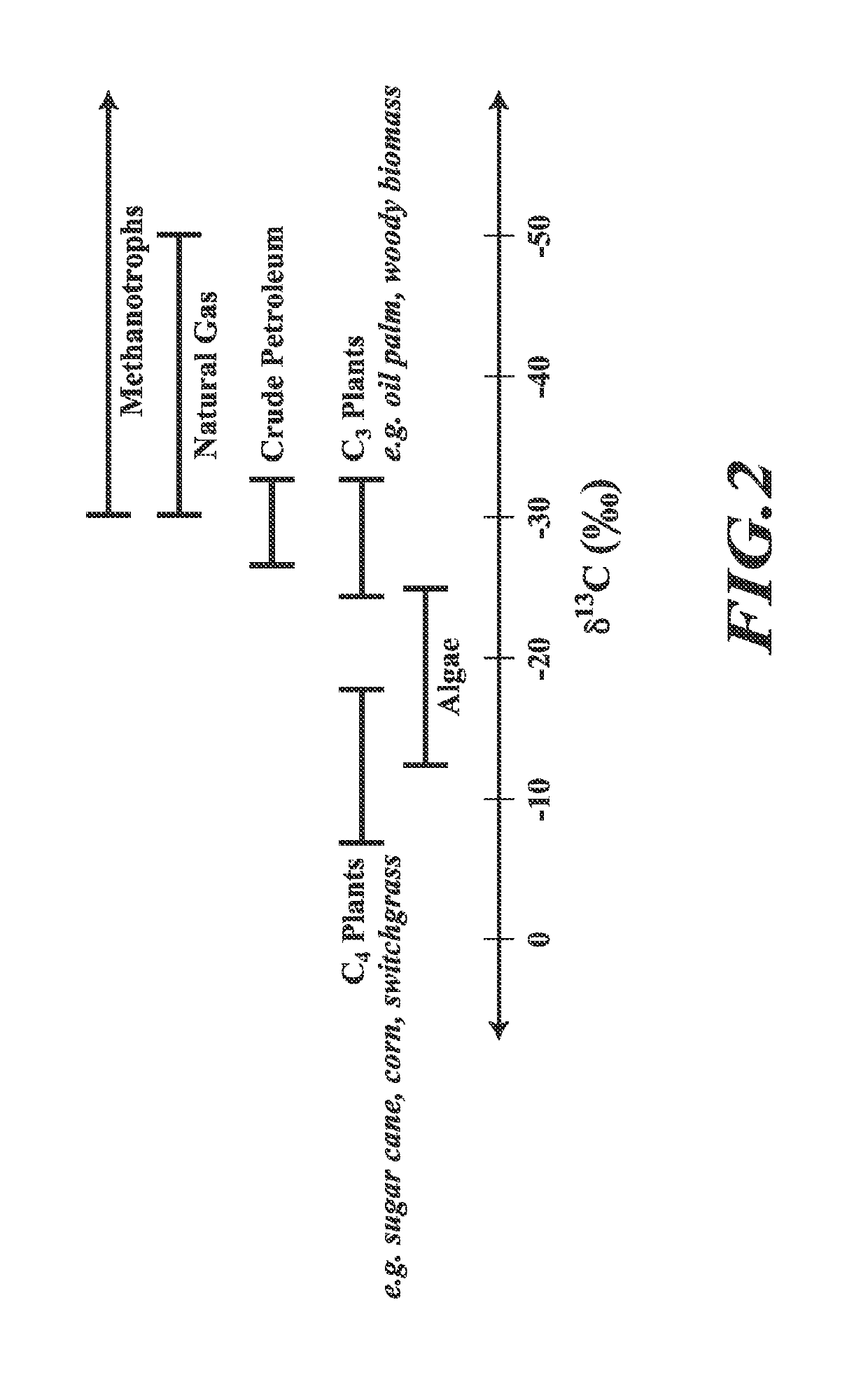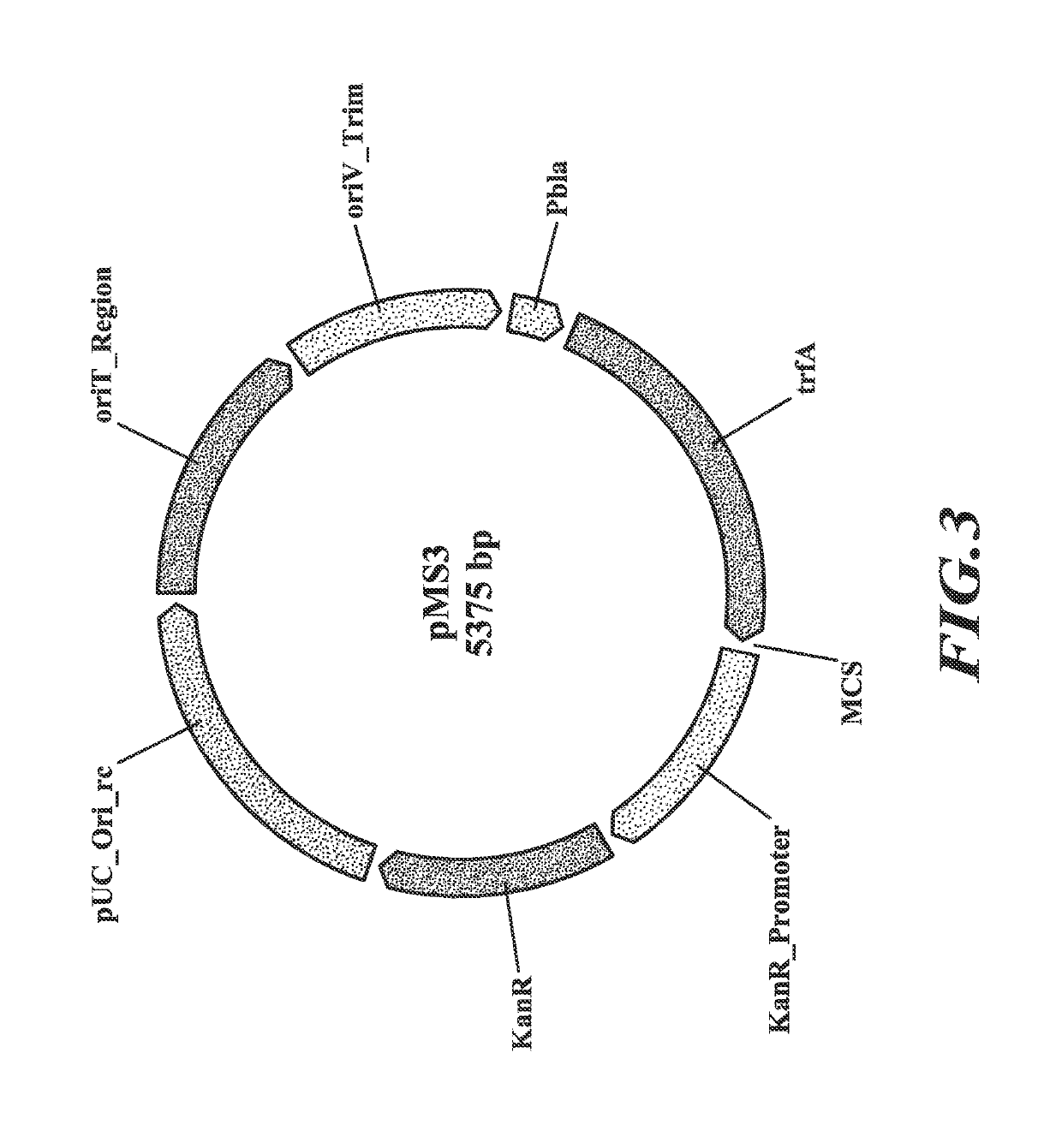Compositions and methods for biological production of lactate from C1 compounds using lactate dehydrogenase transformants
a technology of lactate dehydrogenase and biological lactate, which is applied in the field of compositions and methods for biological production of lactate from c sub > 1 /sub > compounds using lactate dehydrogenase transformants, can solve the problems of relatively expensive carbohydrate feedstocks currently used in biological lactate production, and the practical way of achieving this has not yet been developed
- Summary
- Abstract
- Description
- Claims
- Application Information
AI Technical Summary
Problems solved by technology
Method used
Image
Examples
example 1
C1 Metabolizing Microorganisms Engineered for Lactate Production
I. Methylococcus capsulatus Bath Engineered for Lactate Production.
[0152]Host cells (Methylococcus capsulatus Bath) were engineered to possess an exogenous L-lactate dehydrogenase (ldh) nucleic acid to allow the production of L-lactate from a C1 substrate (methane). Nucleic acid sequences encoding lactate dehydrogenases were codon optimized for Methylococcus capsulatus Bath and synthesized. These codon optimized nucleic acids corresponded in sequence to the following SEQ ID NOs: 1, 3, 5, 7, 9, 11, 13, 15, 17, 19, 21, 23, 25, 27, 29, 31, 33, 35, 37, 39, 41, 43, and 45. They encode the following LDHs, respectively, SEQ ID NOs:2 (Streptococcus pasteurianus), 4 (Lactobacillus helveticus), 6 (Bos taurus), 8 (Pediococcus acidilactici), 10 (Rhizopus oryzae), 12 (Enterococcus faecalis), 14 (Lactobacillus casei), 16 (Bacillus megaterium), 18 (Taeniopygia guttata), 20 (Lactobacillus plantarum), 22 (Lactobaillus acidophilus), 24 (...
example 2
Stable Carbon Isotope Distribution in Products Derived from
C1 Metabolizing Microorganisms
[0171]Methane-derived lactic acid produced by engineered strains of M. capsultus Bath was analyzed for carbon content (% dry weight) and carbon (13C) stable isotope ratio via elemental analyzer / continuous flow isotope ratio mass spectrometry using a CHNOS Elemental Analyzer (vario ISOTOPE cube, Elementar, Hanau, Germany) coupled with an IsoPrime100 IRMS (Isoprime, Cheadle, UK). Samples of methanotrophic biomass cultured in fermenters or serum bottles were centrifuged, resuspended in deionized water and volumes corresponding to 0.2-2 mg carbon (about 0.5-5 mg dry cell weight) were transferred to 5×9 mm tin capsules (Costech Analytical Technologies, Inc., Valencia, Calif.) and dried at 80° C. for at least 24 hours. Samples of lactic acid (approx. 0.3-1 mg) recovered from engineered M. capsulatus Bath cultures expressing LDH-encoding nucleic acid sequences encoding different LDHs were similarly res...
PUM
| Property | Measurement | Unit |
|---|---|---|
| temperature | aaaaa | aaaaa |
| temperature | aaaaa | aaaaa |
| temperature | aaaaa | aaaaa |
Abstract
Description
Claims
Application Information
 Login to View More
Login to View More - R&D
- Intellectual Property
- Life Sciences
- Materials
- Tech Scout
- Unparalleled Data Quality
- Higher Quality Content
- 60% Fewer Hallucinations
Browse by: Latest US Patents, China's latest patents, Technical Efficacy Thesaurus, Application Domain, Technology Topic, Popular Technical Reports.
© 2025 PatSnap. All rights reserved.Legal|Privacy policy|Modern Slavery Act Transparency Statement|Sitemap|About US| Contact US: help@patsnap.com



